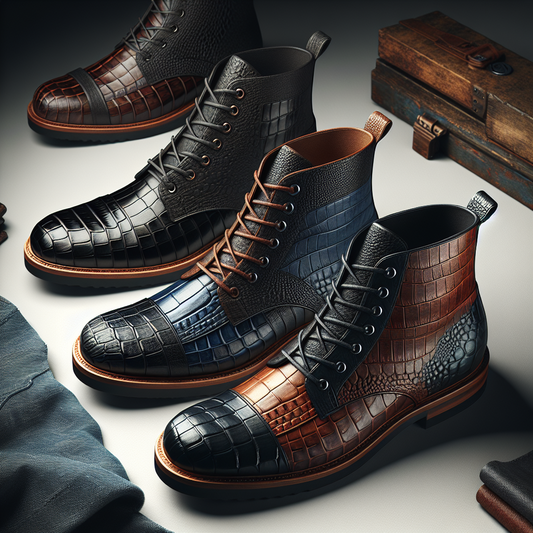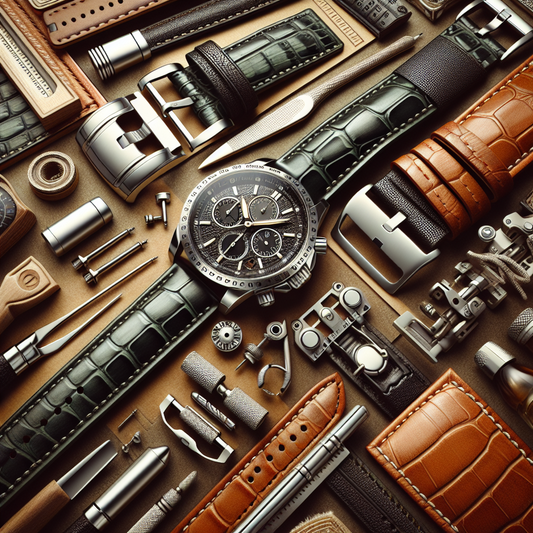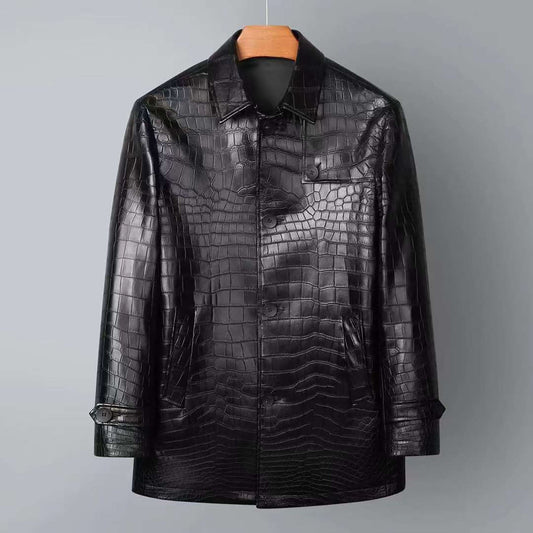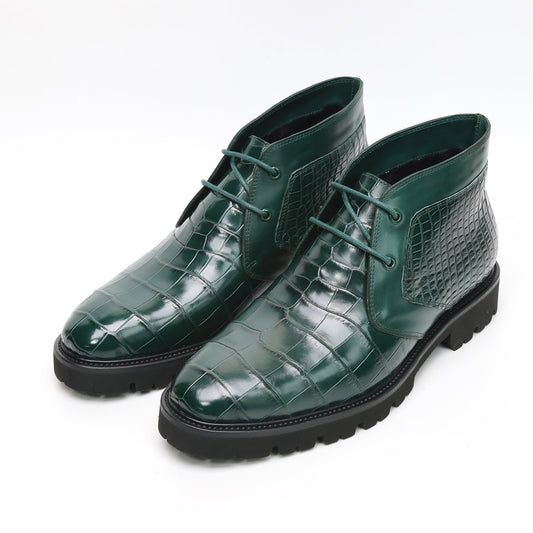Real Alligator Belts: A Guide to Luxury, Craftsmanship, and Ethical Sourcing
Real Alligator Belts: A Guide to Luxury, Craftsmanship, and Ethical Sourcing
A real alligator belt is a statement piece, exuding both elegance and a touch of untamed wilderness. It’s more than just an accessory; it’s a testament to the exquisite craftsmanship and the enduring allure of a material as unique as alligator skin. This guide will delve into the world of real alligator belts, exploring their history, characteristics, and what to look for when making a purchase, all while emphasizing the importance of ethical sourcing and sustainability.
A Glimpse into the History of Alligator Skin
The use of alligator skin dates back centuries, with evidence suggesting its use in ancient cultures for clothing, armor, and even ceremonial purposes. The distinctive patterns and durability of alligator skin made it a prized material for centuries, favored by artisans and royalty alike. The ancient Egyptians used alligator skin for sandals, while the Aztecs utilized it for shields and other protective gear.
In the modern era, alligator skin gained popularity in the 20th century, becoming a symbol of luxury and sophistication. Its use in high-end fashion, particularly for belts, handbags, and shoes, solidified its place in the world of luxury goods. The iconic American fashion designer, Hermès, is credited with popularizing alligator skin in the 1930s with its iconic 'Kelly' and 'Birkin' handbags. This cemented alligator skin as a status symbol for the elite.
The Allure of Alligator Skin: A Closer Look
Alligator skin possesses a unique combination of characteristics that make it so desirable:
- Distinctive Pattern: The signature pattern of alligator skin, with its interlocking scales, creates a visually captivating and tactile experience. This intricate design sets it apart from other leathers and adds a touch of wild elegance. The arrangement of the scales, often described as resembling a honeycomb or a diamond pattern, creates a mesmerizing visual effect, showcasing the natural beauty of the material.
- Durability and Strength: Alligator skin is incredibly durable, thanks to its natural structure. The scales provide exceptional resistance to tearing and abrasion, making it a practical choice for items that will be subjected to wear and tear. Alligator skin is known for its resilience, making it a perfect choice for items that need to withstand the test of time, such as belts, wallets, and boots.
- Luxury and Refinement: Alligator skin is inherently associated with luxury and refinement. Its rarity, combined with the skilled craftsmanship required to work with it, makes it a material reserved for high-end products. A real alligator belt is a statement of sophistication and discerning taste, reflecting a commitment to quality and exclusivity.
What Sets a Real Alligator Belt Apart?
While the term 'alligator belt' might be used loosely, there are key differences between a real alligator belt and those made from other materials. Here's what to look for when seeking a genuine alligator belt:
- Skin Type: The type of alligator skin used for a belt can impact its appearance and price. Belly skin is highly valued for its larger scales and uniform pattern, making it ideal for belts and other accessories where the distinctive pattern is prominently displayed. Back skin, on the other hand, often has smaller scales and a less uniform pattern, making it a more affordable option for less prominent features on items like wallets or shoes.
- Quality of Tanning: Proper tanning is crucial for ensuring the durability and aesthetic appeal of alligator skin. High-quality tanning processes involve careful treatments that preserve the skin's natural strength and flexibility while enhancing its color and luster. This results in a soft, supple leather with a rich, even finish. Poorly tanned skin might feel stiff, have an uneven color, and may be prone to cracking or tearing over time.
- Craftsmanship: The stitching, cut, and overall construction of the belt are essential indicators of quality. Look for belts with even stitching, smooth edges, and a flawless overall appearance. High-quality alligator belts will exhibit meticulous attention to detail, with precise cuts, smooth transitions, and secure stitching. The buckles should also be crafted from high-quality materials, such as stainless steel or sterling silver, complementing the luxurious feel of the alligator skin.
Choosing the Perfect Real Alligator Belt
When selecting a real alligator belt, consider these factors to find the ideal piece for your style and needs:
- Color and Finish: Alligator skin can be dyed in a wide range of colors, from classic black to rich browns and even vibrant greens. Choose a color that complements your wardrobe and personal style, reflecting your individual aesthetic.
- Buckle: The buckle is a crucial element of the belt, and its style can impact the overall look. Buckles can range from simple and understated to bold and eye-catching, adding a touch of personality to the belt. Choose a buckle that complements the belt's design and your personal preferences, whether you favor a classic look, a modern twist, or something more unique.
- Size and Fit: Ensure the belt fits comfortably and securely. A well-fitting belt will enhance your overall look and provide a sense of confidence, ensuring that it stays in place without being too tight or loose.
Caring for Your Real Alligator Belt: Preserving the Investment
A real alligator belt is a significant investment, and proper care will help it last for generations. Here are some essential tips for keeping your belt in top condition:
- Storage: Store your belt in a cool, dry place, ideally in a dust bag or a box to protect it from dust and moisture. Avoid storing it in direct sunlight or humid environments, which can damage the leather and cause discoloration.
- Avoid Direct Sunlight: Prolonged exposure to sunlight can fade the color and damage the leather. Store your belt out of direct sunlight, preferably in a dark or dimly lit area.
- Cleaning: For occasional cleaning, use a soft cloth and a mild leather cleaner specifically designed for exotic skins. Avoid using harsh chemicals or water, which can damage the skin and alter its natural oils.
- Professional Care: If your belt requires more intensive cleaning or restoration, consider taking it to a professional leather cleaner specializing in exotic skins. They have the expertise and appropriate tools to handle delicate materials like alligator skin, ensuring that it receives the best possible care.
The Importance of Ethical Sourcing: Sustainability and Animal Welfare
As consumers, we must be mindful of the origins of our purchases, especially when it comes to products made from exotic materials like alligator skin. The demand for alligator skin has led to overhunting and habitat destruction in the past, putting the species at risk.
To ensure that your real alligator belt is ethically sourced, look for brands that follow sustainable practices:
- Farm-Raised Alligator Skin: Support brands that source their alligator skin from farms that adhere to humane practices and sustainable breeding programs. Farms that prioritize animal welfare and environmental protection are crucial for responsible sourcing. These farms provide a controlled environment where alligators can thrive, ensuring that their population is managed sustainably without harming wild populations.
- Certifications: Look for certifications like CITES (Convention on International Trade in Endangered Species of Wild Fauna and Flora), which regulates the trade of endangered species, including alligators. Brands with these certifications are committed to ethical sourcing and conservation efforts, ensuring that the alligator population is protected while allowing for a controlled and sustainable trade of their skin.
Conclusion: The Enduring Legacy of Real Alligator Belts
A real alligator belt is a timeless and luxurious accessory, representing both exquisite craftsmanship and the enduring allure of a unique and natural material. By understanding the characteristics of alligator skin, choosing a belt from a reputable source, and caring for it properly, you can enjoy the beauty and elegance of this investment piece for years to come. Remember, choosing an ethically sourced belt ensures that you are contributing to sustainable practices and the preservation of this magnificent creature.
In addition to its aesthetic appeal, a real alligator belt is a conversation starter, often eliciting admiration and questions about its origin and craftsmanship. It’s a reminder of the connection between humans and nature, showcasing the beauty and versatility of the natural world. As you wear your real alligator belt, remember the story behind it, the journey it has taken from nature to your wardrobe, and the importance of responsible and sustainable practices in preserving this unique and valuable resource.








